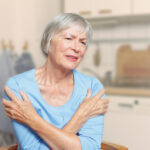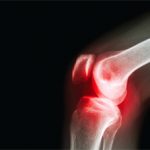By 18 months, participants in the diet and exercise group had lost a mean of 8 kg vs. 2 kg in the control group (P<0.0001), which was also equivalent to a roughly 8% loss in body weight compared to a 2% loss. The diet and exercise group also lost an average of 9 cm in their waist circumference vs. 4 cm in the control group (P<0.001).
The study’s primary outcome was the difference in pain as assessed by the WOMAC between the groups at 18 months. Dr. Messier said, “The diet plus exercise group had less pain at both 6 and 18 months compared to the control group, with a 32% reduction in pain compared to 24%” (4.9 vs. 5.5; P=0.02). However, he added, “This between-group difference was modest and of uncertain clinical importance.”
Dr. Messier also noted that the patients in the diet and exercise group were also 20% more likely to achieve at least a two-point improvement of pain on the WOMAC compared with the control group (P=0.01), a difference he considered clinically meaningful.
Patients’ function as assessed by WOMAC was better for the patients in the diet and exercise group, with a 36% improvement compared to a 24% improvement in the control group (16.4 vs. 19.7; P<0.0001). Dr. Messier also noted that the diet plus exercise group showed a 41-meter improvement from baseline in their six-minute walk distance test; the control group was unchanged, resulting in a statistically significant difference.
The Short-Form Healthy Survey (SF-36) also showed a 20% improvement in the diet and exercise group compared to 6% in the control group in terms of health-related quality of life (41.3 vs. 37.5; P<0.0001). However, patients were not using fewer medications, and depressive symptoms were not significantly different between the two groups at the 18-month follow-up.
Dr. Messier also noted that the 24% improvement in WOMAC pain in the control group suggests that patient engagement and education itself had a positive impact, although not as much as more intensive and hands-on interactions that give patients more support to meet health goals. So rheumatologists should make a point of regularly discussing these topics with appropriate patients, even if they aren’t able to refer them to a setting that can provide more intensive engagement.
Dr. Messier concluded, “These data imply that community-based diet and exercise programs may be a practical alternative to academic programs in improving clinical outcomes in people with knee osteoarthritis, overweight or obesity.”


